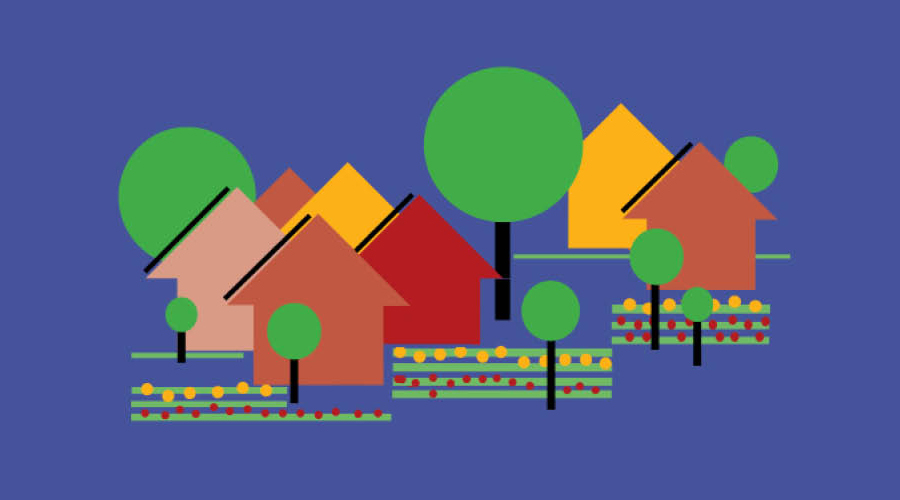Confessions of a Santa Barbara Homeowner
League of Women Voters Sponsors 'Housing on the South Coast 2030: What's Ahead?'

2000: The American Dream Bubble
After living in five other states, my consistent goal to move to California was achieved in 1990. We paid twice as much for a house that was smaller than what we had in Miami, but after a few years we were able to move up the hill to a homogeneous neighborhood of large lots and very little ability to interact with neighbors. The American Dream was alive and well as we saw the value of our home skyrocket after a few more years. I was oblivious to whether local renters had the same level of contentment since I didn’t know anyone in that category.
After a Ponzi scheme wiped out the savings of hundreds of local investors, we moved to a smaller house and began buying rental properties in cheaper states. At the time you could buy a house for $10,000 down, get positive cash flow, and sell for a nice profit. When we tried buying a rental closer to home, it was much more difficult. We saw the downside of being out-of-state landlords as tenants knocked holes in walls and removed exterior doors. And we experienced the difficulty of dealing with renters ourselves such as the Ventura mom who was hit by the recession through no fault of her own and could not pay rent. But proceeds from the sale of our Santa Barbara houses in 2001 and 2005 made up for those losses.
2010: Recession Santa Barbara Style
Buying a business in a recession, and especially a photo studio that was becoming obsolete, led to six stressful years. But it did provide an eye-opening picture of what younger employees were experiencing that were made worse by high rents. Several photographers had huge student loan debt (one at 9 percent interest that required $2,500/month payments) and even after reducing costs by sharing a bedroom, most had to work two or three jobs at a time. Our office manager had taken a big pay cut after the State Street fashion company she worked for closed. And when the death of her landlord forced her out, the search for a replacement and the physical move took a significant toll on her health. We also had difficulty hiring new photographers who matched the diverse population we served (including people of color and Spanish speakers) because most of the best candidates could not afford to stay in the area.
2021: Our Housing Crisis — Inevitable or Fixable?
After retirement in 2015, I had time to make new friends and learned that I had prejudices against renters that grew out of my ignorance. It was also clear from younger family members that the American Dream, at least the concept of home ownership, was dead for many in Southern California. I discovered that Santa Barbara had been getting older for more than three decades and, in more recent years, less diverse. Now that I am paying attention, I continue to see more younger folks being priced out of the community.
The most important lesson that changed my perspective occurred when three friends who don’t know each other experienced soul-crushing evictions a few years ago. All three were well educated and had successful careers, so it became clear that the lack of housing stability was (and is) a problem for thousands of our residents. As long as we have a very low vacancy rate, all renters who are not in government-owned properties or here part-time in a second home are at risk of having to squeeze into a smaller unit, leave the area, or become homeless. We have one of the worst housing stability situations in the country with minimal land, popular tourist destinations, big increase in university enrollment without sufficient building of units, history of no-growth sentiment, etc.
The bright spot this year has been the increased recognition that we have a number of housing problems that cannot be ignored. Some residents believe that we have to choose between having enough housing to accommodate our current residents and workers or protecting Santa Barbara’s quality. I believe it is important to examine how to do both but the more important first question is what is likely to happen if we don’t intentionally commit as a community to improving housing stability for everyone?
2030: Visions for Future South Coast Housing
As we come out of COVID-19 with promised government support for more affordable and sustainable housing and the excellent work by the AIA State Street Design teams, we have a once-in-a-generation opportunity to make progress toward a more sustainable, equitable, healthy, and economically viable community. Please join me at the League of Women Voters online forum “Housing on the South Coast in 2030: What’s Ahead?” on Wednesday, March 17 at noon. Registration is required at this link. Twelve community experts will help us explore the causes of our housing problems and the first steps in moving from vision to implementation of possible solutions.



